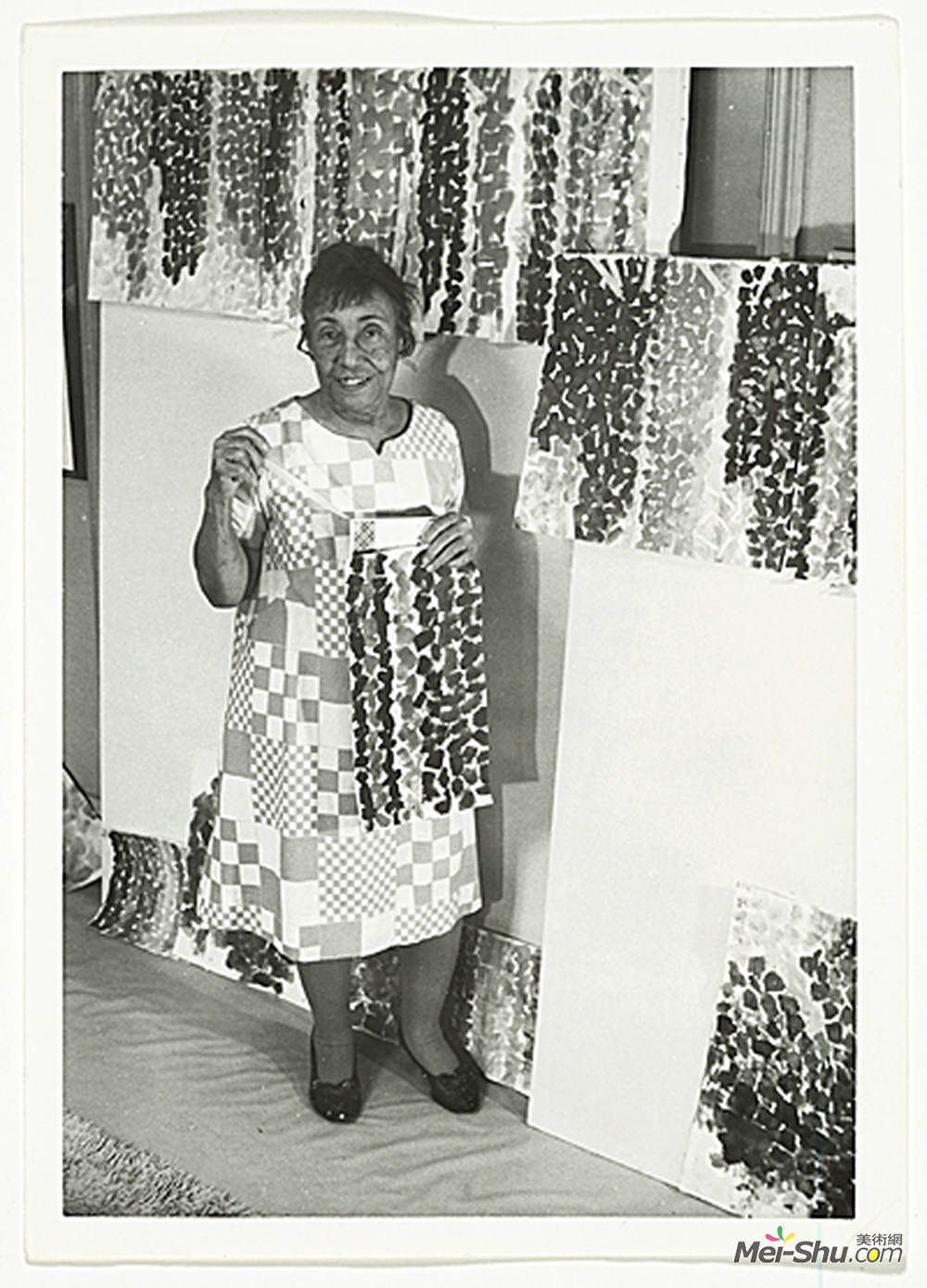
阿尔玛伍兹托马斯(Alma Woodsey Thomas)
艺术家: 阿尔玛伍兹托马斯
生于: 1891年9月20日;哥伦布,格鲁吉亚,美国
卒于: 1978年2月24日;华盛顿特区,美国
国籍: 美国
流派: 画后抽象
领域: 绘画
《Alma Woodsey Thomas》(1891年9月22日至1978年2月24日)是一位非裔美国表现主义画家和艺术教育家。她主要在华盛顿特区生活和工作,《华盛顿邮报》把她描述为华盛顿色彩学校的一支力量。
Alma Thomas'早期的作品在形式上具有代表性,之后在霍华德上课,在詹姆斯·海林和路易斯·麦卢·琼斯的指导下训练。工作变得更加抽象了。托马斯直到1960年从教学岗位上退休,才被公认为职业艺术家。在那里,她从乔·萨默福德和雅各布·凯南那里学到了色彩场运动和理论,并对色彩和构图的使用产生了兴趣。在美国上完第一堂课后,十二年内,她开始创作色彩田园画,灵感来自纽约学派的作品和抽象表现主义。她在家里的厨房里工作,创作了一些像Watusi(Hard Edge)(1963)这样的作品,这是对Matisse剪辑《蜗牛》的一种操作,托马斯在剪辑中变换了形状并改变了Matisse使用的颜色,并以一首胖乎乎的Checker歌曲命名。现年1966岁的是霍华德大学艺术系美术系历史学家James A. Porter。在这次展览中,她创作了一系列激发自然灵感的抽象作品,包括《风与绉桃金娘协奏曲》(1973年),艺术历史学家莎伦·巴顿认为《风与绉桃金娘协奏曲》是非裔美国艺术家创作过的最简约主义色彩场画之一。这些画被比作拜占庭马赛克和Georges Pierre Seurat的点画作品。戴利拉·皮尔斯、托马斯和皮尔斯的一个朋友开车去乡村,托马斯在那里寻求灵感,从光线和大气对乡村环境的影响中汲取灵感。1972年,托马斯是第一个在惠特尼美国艺术博物馆举办个人展览的非裔美国人,同年在科科兰美术馆也举办了展览。
Artist :Alma Woodsey Thomas
Additional Name :Alma Woodsey Thomas
Born : Columbus, Georgia, United States
Died : Washington, D.C., United States
Nationality :American
Art Movement :Post-Painterly Abstraction
Alma Woodsey Thomas (September 22, 1891 – February 24, 1978) was an African American Expressionist painter and art educator. She lived and worked primarily in Washington, D.C. and the Washington Post described her as a force in the Washington Color School.
Alma Thomas' early work was representational in manner, and then and upon classes at Howard and training under James V. Herring and Lois Mailou Jones her work became more abstract. Thomas would not be recognized as a professional artist until her retirement from teaching in 1960, when she enrolled in classes at American University. There she learned about the Color Field movement and theory from Joe Summerford and Jacob Kainen and became interested in the use of color and composition. Within twelve years after her first class at American she began creating Color Field paintings, inspired by the work of the New York School and Abstract Expressionism. She worked out of the kitchen in her house, creating works like Watusi (Hard Edge) (1963), a manipulation of the Matisse cutout The Snail, in which Thomas shifted shapes around and changed the colors that Matisse used, and named it after a Chubby Checker song.
Her first retrospective exhibit was in 1966 at the Gallery of Art at Howard University, curated by art historian James A. Porter. For this exhibition she created Earth Paintings, a series of nature inspired abstract works, including Wind and Crepe Myrtle Concerto (1973) which art historian Sharon Patton considers "one of the most Minimalist Color-Field paintings ever produced by an African-American artist." These paintings have been compared to Byzantine mosaics and the pointillist paintings of Georges-Pierre Seurat. A friend of Delilah Pierce, Thomas and Pierce would drive into the countryside where Thomas would seek inspiration, pulling ideas from the effects of light and atmosphere on rural environments. Thomas was, in 1972, the first African-American woman to have a solo exhibition at the Whitney Museum of American Art, and within the same year an exhibition was also held at the Corcoran Gallery of Art.